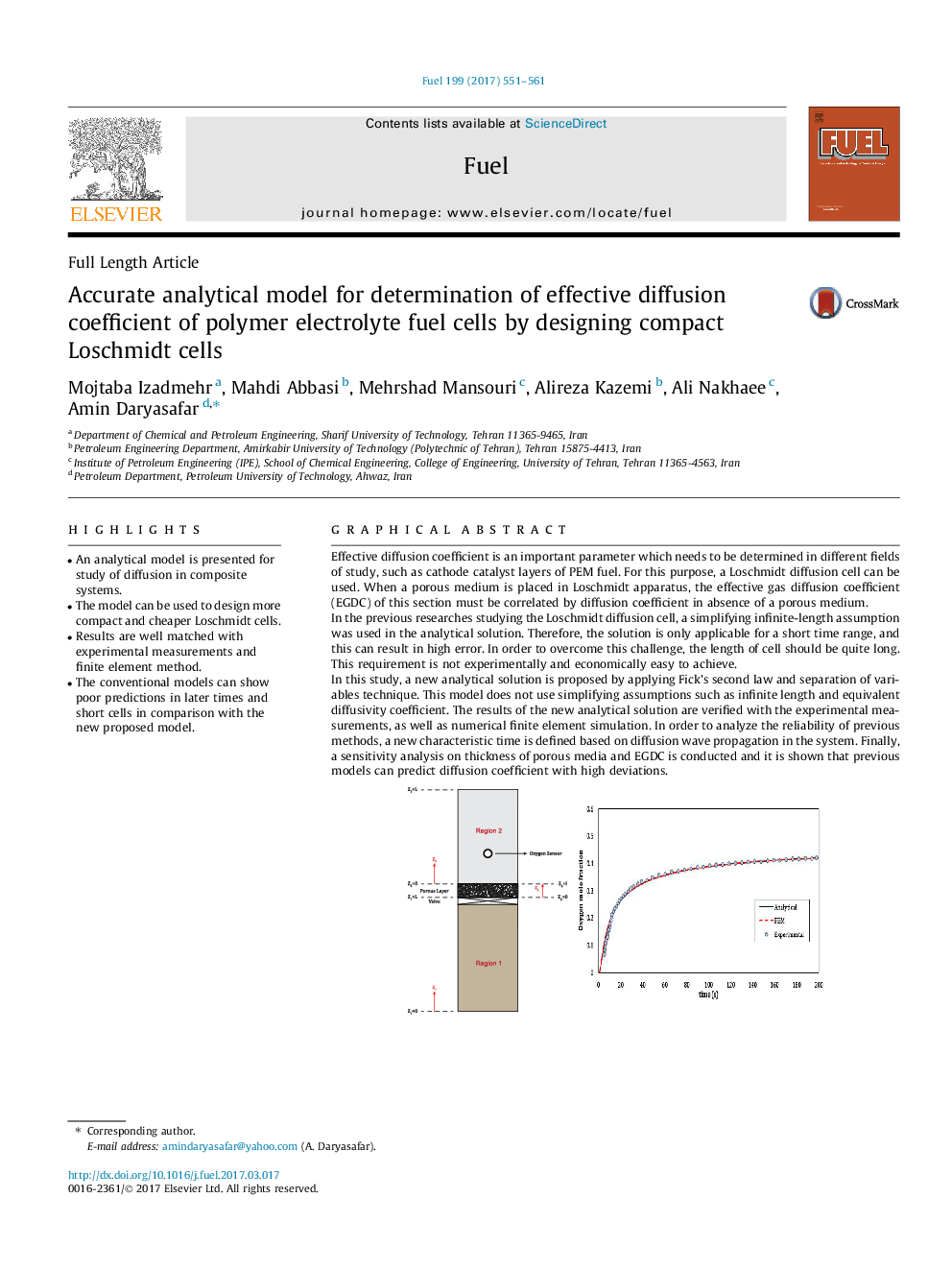| کد مقاله | کد نشریه | سال انتشار | مقاله انگلیسی | نسخه تمام متن |
|---|---|---|---|---|
| 6474826 | 1424965 | 2017 | 11 صفحه PDF | دانلود رایگان |
- An analytical model is presented for study of diffusion in composite systems.
- The model can be used to design more compact and cheaper Loschmidt cells.
- Results are well matched with experimental measurements and finite element method.
- The conventional models can show poor predictions in later times and short cells in comparison with the new proposed model.
Effective diffusion coefficient is an important parameter which needs to be determined in different fields of study, such as cathode catalyst layers of PEM fuel. For this purpose, a Loschmidt diffusion cell can be used. When a porous medium is placed in Loschmidt apparatus, the effective gas diffusion coefficient (EGDC) of this section must be correlated by diffusion coefficient in absence of a porous medium.In the previous researches studying the Loschmidt diffusion cell, a simplifying infinite-length assumption was used in the analytical solution. Therefore, the solution is only applicable for a short time range, and this can result in high error. In order to overcome this challenge, the length of cell should be quite long. This requirement is not experimentally and economically easy to achieve.In this study, a new analytical solution is proposed by applying Fick's second law and separation of variables technique. This model does not use simplifying assumptions such as infinite length and equivalent diffusivity coefficient. The results of the new analytical solution are verified with the experimental measurements, as well as numerical finite element simulation. In order to analyze the reliability of previous methods, a new characteristic time is defined based on diffusion wave propagation in the system. Finally, a sensitivity analysis on thickness of porous media and EGDC is conducted and it is shown that previous models can predict diffusion coefficient with high deviations.
Effective diffusion coefficient is an important parameter which needs to be determined in different fields of study, such as cathode catalyst layers of PEM fuel. For this purpose, a Loschmidt diffusion cell can be used. When a porous medium is placed in Loschmidt apparatus, the effective gas diffusion coefficient (EGDC) of this section must be correlated by diffusion coefficient in absence of a porous medium.In the previous researches studying the Loschmidt diffusion cell, a simplifying infinite-length assumption was used in the analytical solution. Therefore, the solution is only applicable for a short time range, and this can result in high error. In order to overcome this challenge, the length of cell should be quite long. This requirement is not experimentally and economically easy to achieve.In this study, a new analytical solution is proposed by applying Fick's second law and separation of variables technique. This model does not use simplifying assumptions such as infinite length and equivalent diffusivity coefficient. The results of the new analytical solution are verified with the experimental measurements, as well as numerical finite element simulation. In order to analyze the reliability of previous methods, a new characteristic time is defined based on diffusion wave propagation in the system. Finally, a sensitivity analysis on thickness of porous media and EGDC is conducted and it is shown that previous models can predict diffusion coefficient with high deviations.93
Journal: Fuel - Volume 199, 1 July 2017, Pages 551-561
